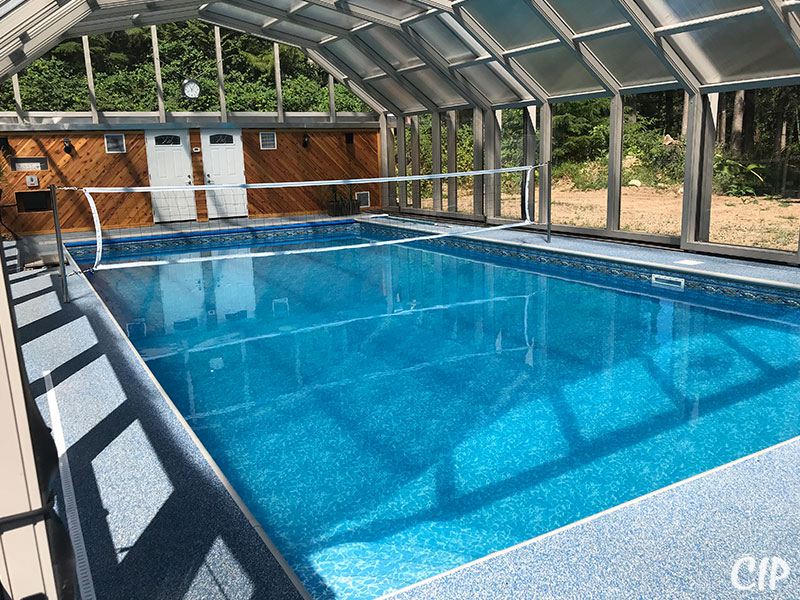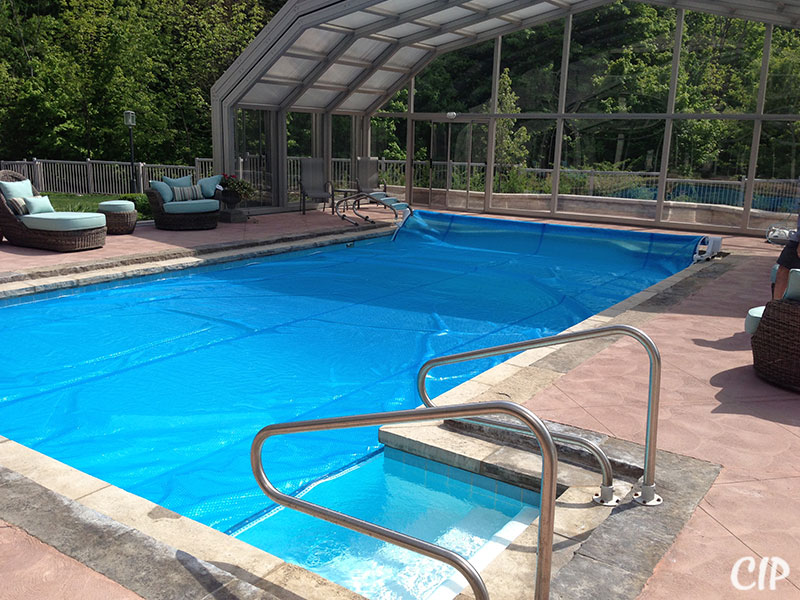Swimming pool enclosures have become indispensable additions to modern outdoor living spaces, offering a myriad of benefits that enhance enjoyment and streamline maintenance. From extending the swimming season to reducing maintenance efforts and enhancing safety, pool enclosures provide a versatile solution for homeowners seeking to make the most of their pool investment. In this comprehensive guide, we’ll explore the various types of pool enclosures, their benefits, installation considerations, and maintenance tips, empowering homeowners to create a relaxing and functional pool environment that can be enjoyed year-round.
Types of Swimming Pool Enclosures

Pool enclosures come in a variety of styles and configurations, each offering unique features and benefits to suit different preferences and needs. The most common types of pool enclosures include:
1. Retractable Enclosures: Retractable pool enclosures feature a telescopic design that allows them to open and close as needed. These versatile enclosures offer the flexibility to enjoy the pool in any weather condition, with the option to retract the enclosure for an open-air experience on sunny days. Retractable enclosures are ideal for homeowners who want the convenience of indoor and outdoor swimming year-round.
2. Fixed Enclosures: Fixed pool enclosures provide permanent coverage over the pool area, offering protection from the elements and creating a sheltered swimming environment. These enclosures are typically constructed of durable materials such as glass, polycarbonate, or aluminum, providing insulation and UV protection while maintaining visibility of the surrounding landscape. Fixed enclosures are ideal for homeowners seeking a year-round swimming solution with minimal maintenance requirements.
3. Dome Enclosures: Dome-shaped pool enclosures offer a unique design that maximizes space and provides ample headroom for swimming and lounging. These enclosures are often constructed of transparent materials, allowing natural light to enter while keeping the pool area enclosed and protected. Dome enclosures are ideal for homeowners who want to create a bright and airy swimming environment with a distinctive architectural style.
Benefits of Swimming Pool Enclosures

Pool enclosures offer a wide range of benefits that enhance enjoyment and minimize maintenance for homeowners. Some of the key benefits include:
1. Extended Swimming Season
By providing protection from inclement weather, pool enclosures extend the swimming season, allowing homeowners to enjoy their pool for a longer period throughout the year. Whether it’s a retractable enclosure for seasonal use or a fixed enclosure for year-round swimming, pool enclosures provide a comfortable and sheltered environment for swimming and relaxation.
2. Reduced Maintenance
Pool enclosures help minimize maintenance efforts by keeping debris, leaves, and insects out of the pool area. This reduces the need for skimming, vacuuming, and chemical treatments, saving homeowners time and effort on pool maintenance tasks. Additionally, enclosures help prevent evaporation, reducing water loss and the need for frequent refilling.
3. Enhanced Safety
Pool enclosures enhance safety by creating a physical barrier that prevents unauthorized access to the pool area. This helps protect children, pets, and wildlife from accidental drowning and reduces the risk of slips, falls, and other pool-related accidents. Many pool enclosures also feature locking mechanisms and safety sensors for added peace of mind.
4. Pest Control
Pool enclosures act as a barrier against pests such as mosquitoes, flies, and rodents, minimizing the presence of insects and vermin in the pool area. By keeping pests out, enclosures create a more comfortable and enjoyable swimming environment for users.
5. Privacy Enhancement
Pool enclosures provide privacy for homeowners and their families, shielding the pool area from prying eyes and neighboring properties. This added privacy allows for more relaxed and intimate gatherings, whether lounging poolside or hosting outdoor events.
6. Enhanced Property Value
Installing a pool enclosure can increase the value of the property by enhancing its aesthetic appeal, functionality, and desirability. Potential homebuyers may perceive a pool enclosure as a desirable feature that adds value and appeal to the property, making it more attractive on the real estate market.
7. Year-Round Versatility
Pool enclosures offer year-round versatility, allowing homeowners to enjoy their pool in all seasons and weather conditions. Whether it’s a sunny summer day, a chilly autumn evening, or a rainy spring afternoon, pool enclosures provide a sheltered and comfortable environment for swimming and relaxation.
Installation Considerations for Swimming Pool Enclosures

When installing a pool enclosure, there are several factors to consider to ensure optimal performance and functionality:
1. Size and Design: Choose a pool enclosure size and design that complements the existing pool layout and landscaping. Consider factors such as available space, architectural style, and desired functionality when selecting an enclosure type and configuration.
2. Materials and Construction: Select high-quality materials and construction methods that are durable, weather-resistant, and low-maintenance. Common materials for pool enclosures include aluminum, polycarbonate, and tempered glass, each offering unique benefits in terms of insulation, transparency, and longevity.
3. Local Regulations and Permits: Check local building codes and regulations to ensure compliance with requirements for pool enclosures. Obtain any necessary permits and approvals before beginning installation to avoid potential legal issues or fines.
Maintenance Tips for Swimming Pool Enclosures
To keep your pool enclosure in top condition and maximize its lifespan, follow these maintenance tips:
1. Regular Cleaning: Clean the enclosure regularly to remove dirt, dust, and debris buildup. Use mild soap and water to wash the enclosure panels and frames. Afterward, rinse thoroughly with clean water to prevent streaking and water spots.
2. Inspect for Damage: Periodically inspect the enclosure for signs of wear, damage, or corrosion. Repair or replace any damaged or worn components promptly. Doing this prevents further deterioration and ensures the structural integrity of the enclosure.
3. Lubricate Moving Parts: Lubricate hinges, tracks, and other moving parts as needed to ensure smooth operation and prevent rusting or seizing. Use a silicone-based lubricant to avoid attracting dirt and debris that can cause friction and damage over time.
Conclusion
Swimming pool enclosures offer a host of benefits that maximize enjoyment and minimize maintenance for homeowners. Whether it’s extending the swimming season, reducing maintenance efforts, enhancing safety, or creating a sheltered swimming environment, pool enclosures provide a versatile solution that enhances the overall pool ownership experience. By understanding the different types of enclosures, their benefits, installation considerations, and maintenance tips, homeowners can make informed decisions to create a relaxing and functional pool environment that can be enjoyed year-round.

